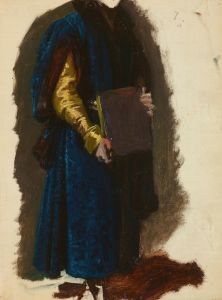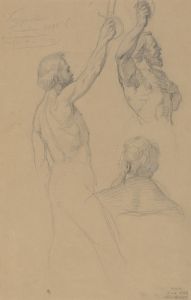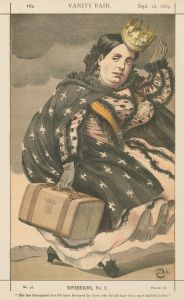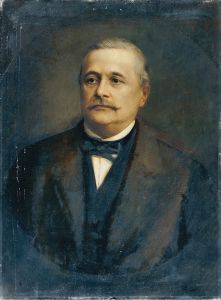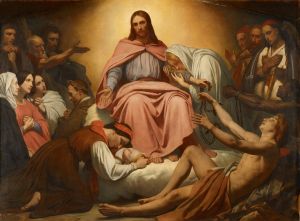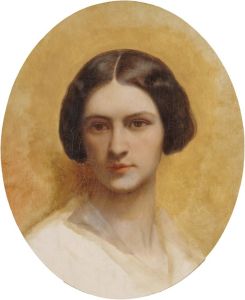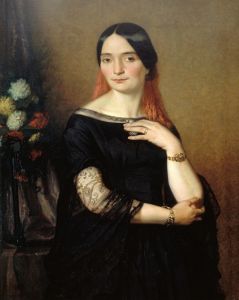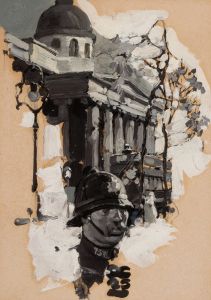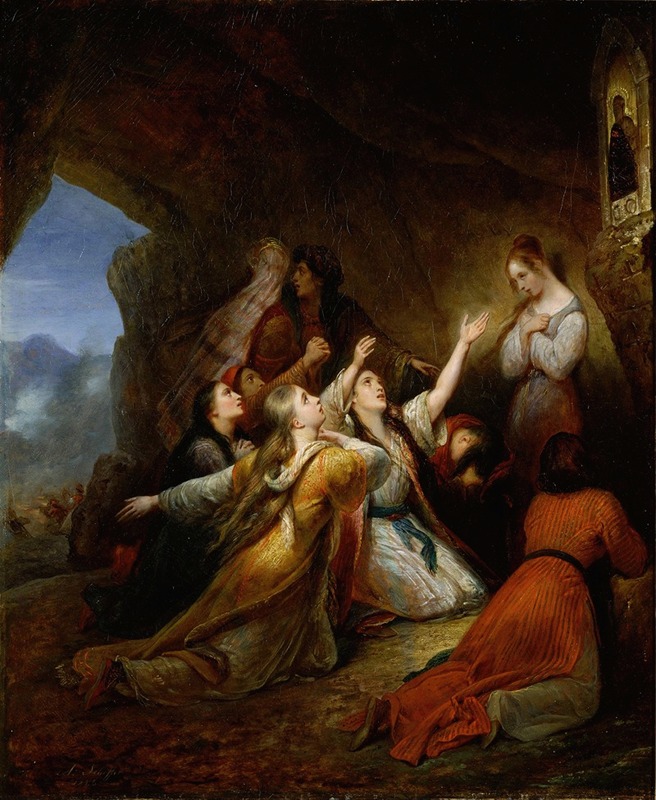
Greek Women Imploring at the Virgin of Assistance
A hand-painted replica of Ary Scheffer’s masterpiece Greek Women Imploring at the Virgin of Assistance, meticulously crafted by professional artists to capture the true essence of the original. Each piece is created with museum-quality canvas and rare mineral pigments, carefully painted by experienced artists with delicate brushstrokes and rich, layered colors to perfectly recreate the texture of the original artwork. Unlike machine-printed reproductions, this hand-painted version brings the painting to life, infused with the artist’s emotions and skill in every stroke. Whether for personal collection or home decoration, it instantly elevates the artistic atmosphere of any space.
Ary Scheffer's painting "Greek Women Imploring at the Virgin of Assistance" is a notable work created by the Dutch-French Romantic painter in the 19th century. Scheffer, who was born in Dordrecht, Netherlands, in 1795, became one of the prominent figures in the Romantic movement, known for his emotive and often religious-themed works. He spent much of his career in France, where he became a central figure in the Parisian art scene.
The painting "Greek Women Imploring at the Virgin of Assistance" reflects the Romantic era's fascination with themes of emotion, spirituality, and historical events. It depicts a poignant scene where Greek women are shown in a moment of desperation and supplication, appealing to the Virgin Mary for help. This imagery is likely inspired by the Greek War of Independence (1821–1829), a significant historical event during which Greece sought independence from the Ottoman Empire. The war captured the imagination of many European artists and intellectuals, who were moved by the Greek struggle for freedom and the broader themes of liberty and national identity.
Scheffer's work often conveyed deep emotional intensity, and this painting is no exception. The composition is designed to evoke empathy and a sense of urgency, with the figures portrayed in a state of emotional distress. The Virgin Mary, a central figure in Christian iconography, is depicted as a source of hope and divine intervention, a common theme in Scheffer's religious works.
The painting is characterized by Scheffer's typical use of soft, muted colors and delicate brushwork, which enhance the emotional impact of the scene. The figures are rendered with a sense of realism and attention to detail, which was a hallmark of Scheffer's style. His ability to convey complex emotions through facial expressions and body language is evident in this work, as the women are shown with a mixture of hope, despair, and reverence.
Scheffer's interest in historical and religious subjects was influenced by his background and the intellectual environment of his time. He was part of a circle of artists and writers who were deeply engaged with the political and social issues of the day. His works often reflect a humanitarian concern and a desire to address themes of suffering and redemption.
"Greek Women Imploring at the Virgin of Assistance" is a testament to Scheffer's skill as a painter and his ability to capture the spirit of his age. The painting not only serves as a historical document reflecting the sentiments of the Romantic period but also continues to resonate with audiences for its universal themes of faith and resilience in the face of adversity.
While specific details about the painting's current location or provenance might not be widely documented, Ary Scheffer's works are held in various collections around the world, including major museums in France and the Netherlands. His legacy as a leading Romantic painter endures, and his works continue to be studied and appreciated for their emotional depth and historical significance.





